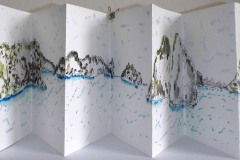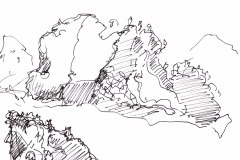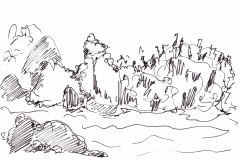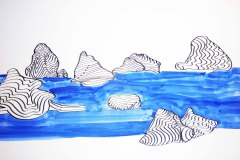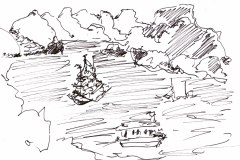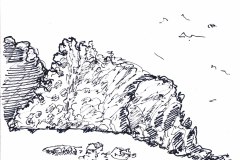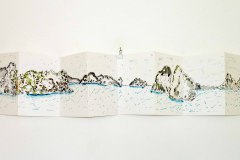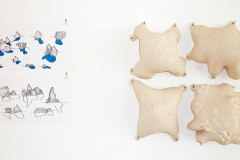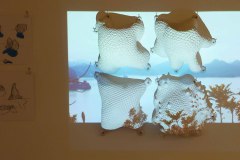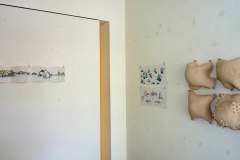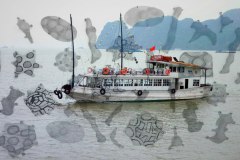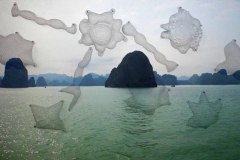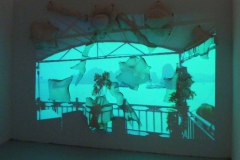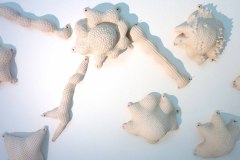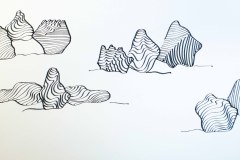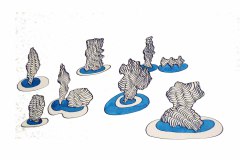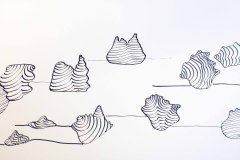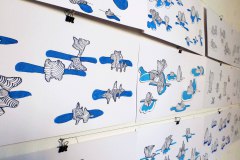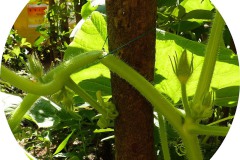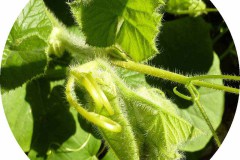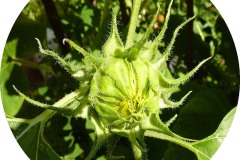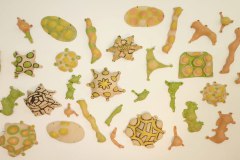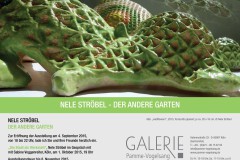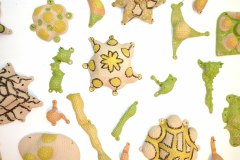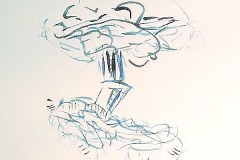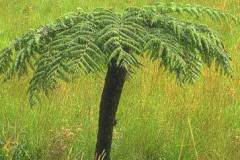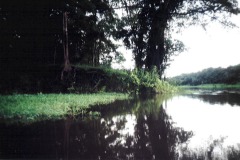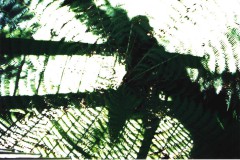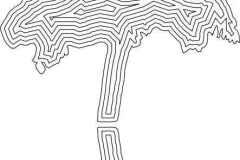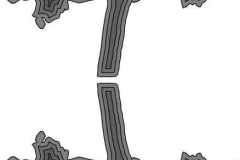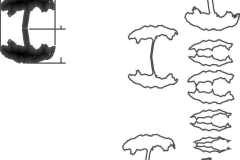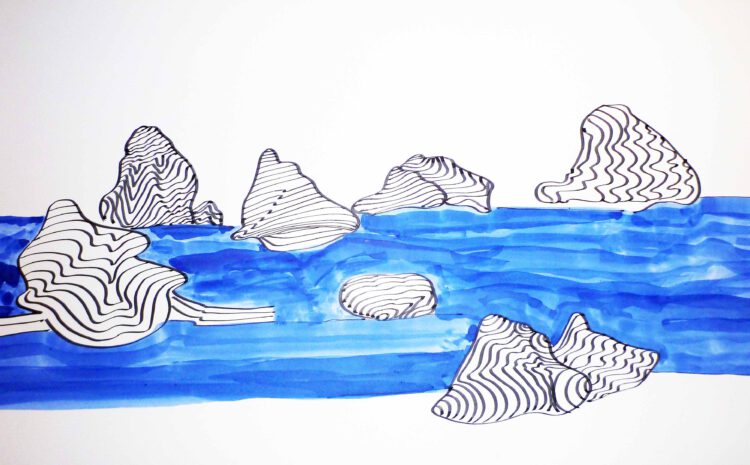
halong bay and wallflowers
halong bay
today a place of longing for lovers and families was one of the last refuges of the Viet Cong.
Both the sculptural wall works made of white terracotta and the drawings on leporellos thematize different “aggregate states” of subjective and collective projection onto our environment.
“Nele Ströbel has been traveling for many years in countries near and far to investigate the interplay of specific topographies and the people living, acting and shaping their socio-social structures there. With her chosen materials and means of expression, she literally creates a picture of the respective concrete place. Not as a >veduta painter<, like her ancestors, but as an explorer of experienced, remembered and present human (action) spaces, Ströbel visited, for example, the cities of Damascus, Isfahan, and the Arabian Peninsula.
and Cairo, Chittagong in Bangladesh, or even 15 women’s convents in Bavaria. The
She first presented the results of this latter, inner-German journey under the title “Hortus Conclusus” in 2006.
Her “Urban Gardening” project can be seen as an almost seamless continuation of the “Hortus Conclusus” project – instead of the nuns, now the city dwellers act, instead of the quiet, secluded and meditative monastery garden, now the lively, shrill city is the space in which the action takes place.
Since 2011 Nele Ströbel has her second residence in Berlin-Kreuzberg and
Naturally, she is on the move there with an alert, inquisitive eye. She discovered the phenomenon of gardening in the city – a new survival strategy of the harried, often socially and/or materially impoverished city dweller of the globalized “acceleration society” who seeks to satisfy the longing for a self-determined, manageable and intelligible life.
As an artist, Nele Ströbel consistently takes an ‘observation post’ and
avoids in her artistic reflection any form of her own consternation or social criticism (kitsch). Comparable to Paul Cézanne, who painted “parallel to nature” and deconstructed the seen motif in order to then reconstruct it on the canvas, Nele Ströbel proceeds in her work.
In this way, photos, films, first drawings and watercolors are created on the basis of which Ströbel internalizes the subject. In the next step, she ‘casts’ these macro- and microscopic impressions in a material that is causally connected with nature, preferably wood and clay. The abstract forms, newly constructed in this way, are autonomous works of art that are closely interrelated to the initial theme of their artistic exploration, thus making it possible to experience the tension between the poles of nature and culture in a completely new way.”
Dr. Gudrun Pamme-Vogelsang


